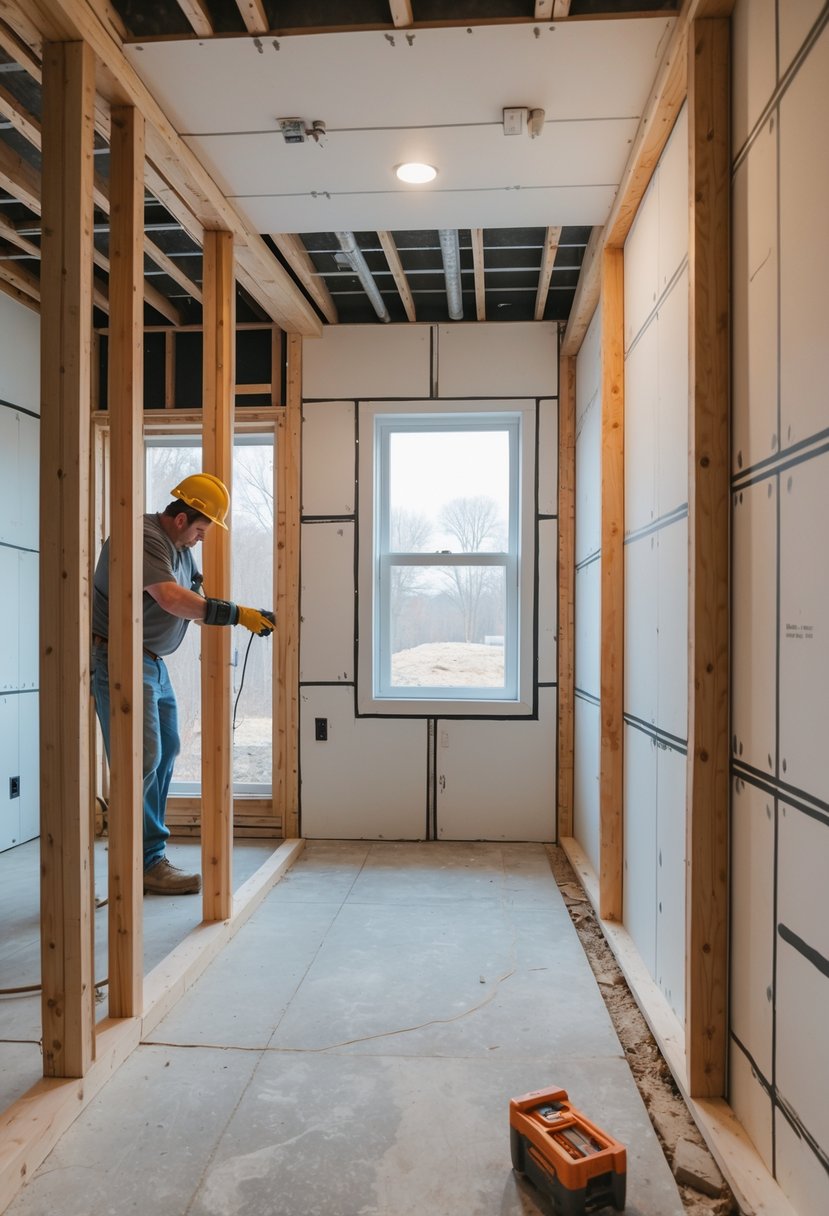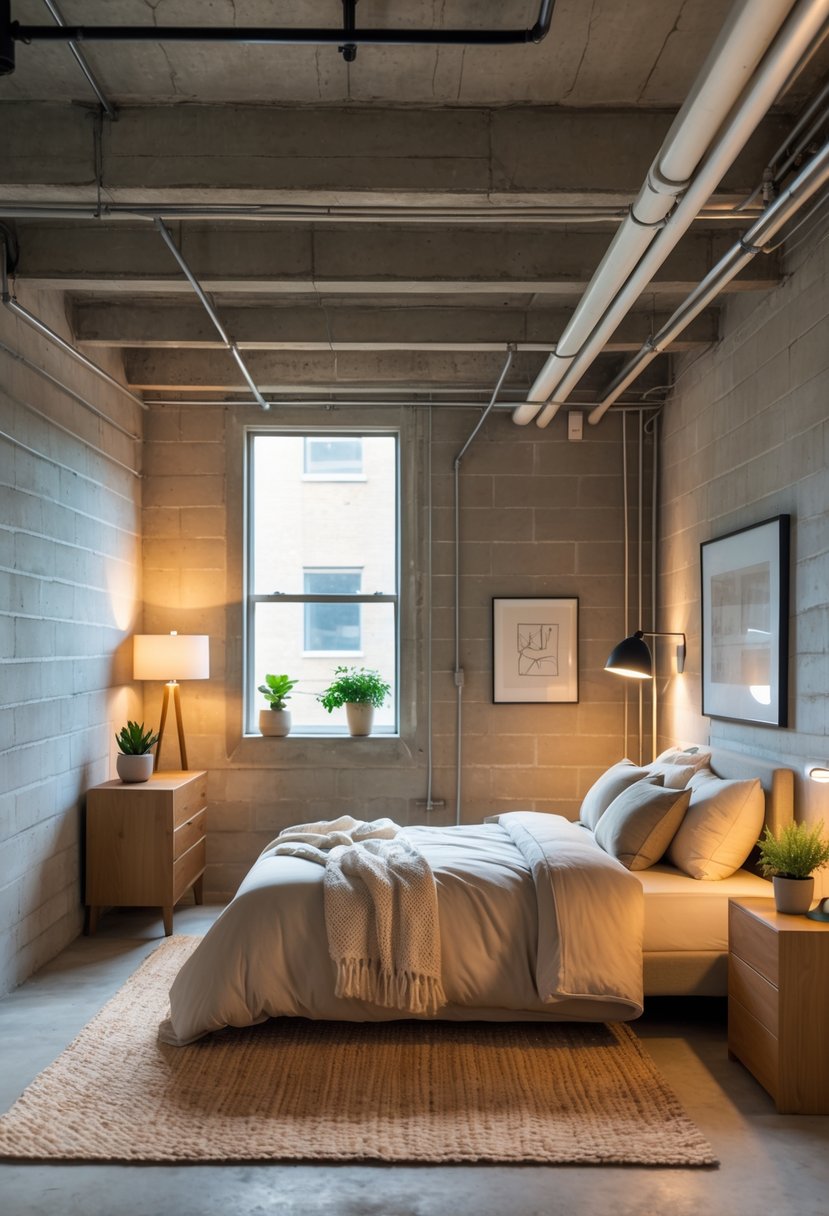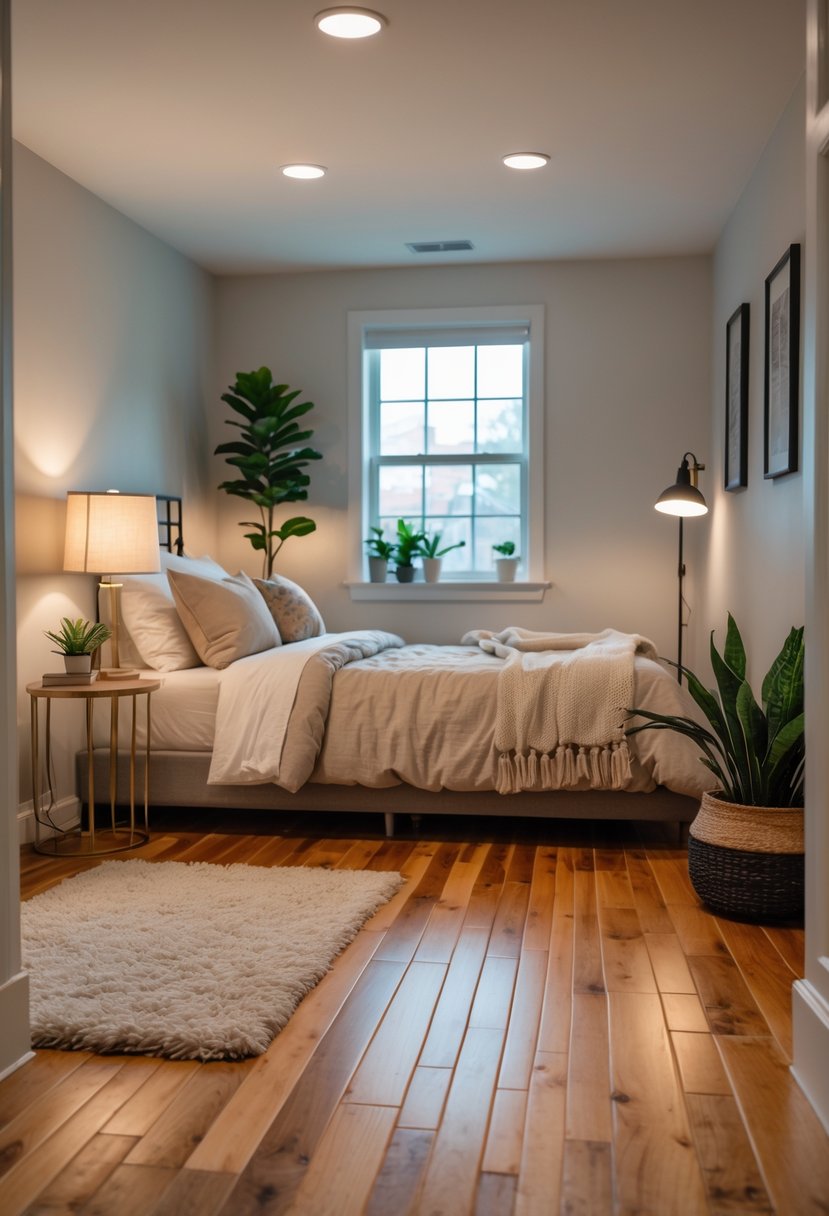Unfinished Basement Bedroom Ideas: 7 Practical Solutions to Maximize Space
Many homeowners have unfinished basements that offer extra space but lack comfort or style. Turning this area into a bedroom is a practical way to create more living space without building an addition.

An unfinished basement bedroom can provide a functional and comfortable space when designed with basic improvements and thoughtful choices. This article will explore how to make the most of an unfinished basement for sleeping and relaxation.
1) Install moisture-resistant drywall to prevent mold and mildew

They should use moisture-resistant drywall in an unfinished basement bedroom. This drywall has a core that resists water and a fiberglass layer that adds strength.
It helps stop mold and mildew from growing, especially in damp areas like basements. Painting the drywall with mold-resistant paint adds extra protection against mold.
2) Use layered lighting with recessed lights and lamps for warmth

They should install recessed ceiling lights to provide even, general lighting in the basement bedroom. These lights keep the ceiling clear and spread soft light across the room.
Adding table or floor lamps creates pockets of warm light. This helps make the space feel cozy and inviting despite the unfinished surroundings.
Using both types of lighting allows for flexibility. The layered approach improves both function and comfort in the basement bedroom.
3) Add a floor-to-ceiling closet system to maximize storage

A floor-to-ceiling closet system uses all available vertical space for storage. It helps keep the basement bedroom uncluttered by providing plenty of room for clothes and other items.
This type of closet can be customized to fit the room’s size and style. It also makes the space look more organized and polished.
4) Choose warm paint colors like soft beige or light gray

Warm paint colors help make an unfinished basement bedroom feel more inviting. Soft beige and light gray are good choices because they reflect light well. These colors create a cozy atmosphere without making the space feel smaller.
Using light shades can also brighten the room, helping to offset low natural light. This makes the basement bedroom more comfortable and livable.
5) Incorporate area rugs to soften concrete floors

Area rugs help make a basement bedroom feel warmer and more comfortable. They cover the cold, hard concrete floors and add texture to the space. Choosing a large rug can define the bedroom area and create a cozy atmosphere.
Rugs also bring color and style to unfinished basements. Layering a smaller rug on top of a larger one can add depth and interest without much effort.
6) Install an egress window for safety and natural light

An egress window is required for safety in basement bedrooms. It provides an emergency exit in case of fire or other dangers.
The window also brings natural light into the room, improving comfort and ventilation.
When installing, the window must meet local building codes, including size and accessibility rules. This ensures it functions properly as an escape route.
7) Use soundproofing insulation to reduce noise

They should add soundproofing insulation to the basement ceiling and walls. Materials like fiberglass, mineral wool, or foam board help block noise.
Proper installation is important to seal gaps and reduce sound from upstairs. This also prevents basement noise from disturbing others above.
Legal and Safety Considerations

Creating a basement bedroom requires following strict rules to ensure it is safe and lawful. Key requirements include meeting certain codes for construction and installing proper emergency exits.
Building Codes for Basement Bedrooms
Basement bedrooms must follow local building codes that cover ceiling height, ventilation, insulation, and moisture control. Typically, the minimum ceiling height required is around 7 feet, but this can vary by area. Proper ventilation helps prevent dampness and mold, which are common in basements.
Permits are often needed before remodeling a basement into a bedroom. Inspectors will check if the room meets fire safety rules, such as using fire-resistant materials for walls or ceilings. Electrical wiring must also follow safety standards.
Meeting these codes ensures the room is safe to live in and increases the home’s value. Homeowners should verify local rules as requirements can differ by city or county.
Egress Window Requirements
An egress window is a critical safety feature that acts as an emergency exit from the basement bedroom. It must open wide enough to allow easy escape during an emergency.
The minimum opening size is usually 5.7 square feet, with a minimum height of 24 inches and width of 20 inches. The bottom of the window must not be more than 44 inches above the floor for easy access.
The window well outside the basement should be at least 36 inches wide and 36 inches long. It must also have a ladder or steps if it is more than 44 inches deep.
These rules ensure that anyone inside the basement can exit safely during a fire or other emergency. Missing or improper egress windows can make a bedroom illegal to use.
Creating a Comfortable Living Space

A basement bedroom must address common challenges like dampness and poor lighting to be truly comfortable. Proper control of moisture and clever lighting choices will help make the space livable and inviting.
Moisture Control and Insulation
Moisture control is critical in basements to prevent mold, mildew, and damage. Installing a vapor barrier on walls and floors can stop ground moisture from entering the space. Proper insulation also helps maintain steady temperatures and reduces dampness.
Rigid foam insulation or spray foam works well for basements because it resists moisture better than fiberglass. Sealing cracks and gaps around windows, pipes, and the foundation prevents air leaks and water intrusion.
A dehumidifier is useful to keep humidity levels between 30% and 50%. This reduces the risk of mold growth and keeps the air fresh. Flooring should be moisture-resistant, such as vinyl planks or sealed concrete.
Lighting Solutions for Basements
Basements often lack natural light, so artificial lighting is key. Using a mix of overhead, task, and accent lights helps create a warm and balanced environment. LED recessed lights are energy-efficient and can spread light evenly without taking up headroom.
Adding table or floor lamps near seating and beds gives soft, adjustable light for comfort. Mirrors can also help reflect light and make the room feel bigger and brighter.
If windows exist, installing light wells or enlarging them improves daylight access. Using light-colored walls and ceilings enhances brightness by reflecting the available light.






